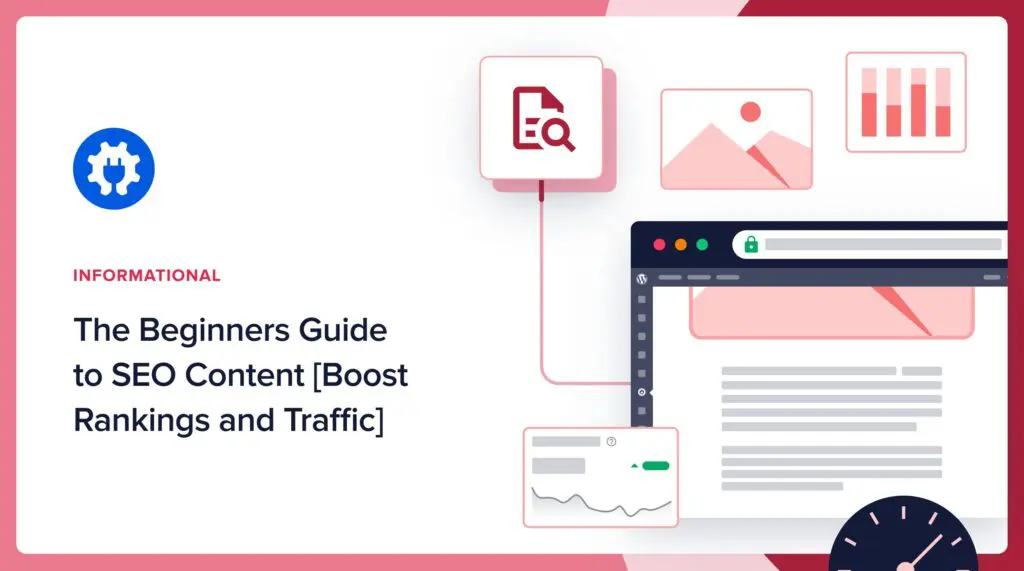Unleash the power of your website with these 6 game-changing meta tags that will revolutionize your SEO strategy now!

Image courtesy of via DALL-E 3
Table of Contents
Introduction to SEO and Meta Tags
This section will provide an introduction to SEO (Search Engine Optimization) and explain the significance of meta tags for websites. It will shed light on how meta tags play a crucial role in helping search engines understand the content of a webpage.
What is SEO?
SEO, which stands for Search Engine Optimization, is a practice of optimizing a website to enhance its visibility on search engines like Google. By implementing SEO strategies, websites can attract more visitors who are searching for relevant information or products.
Understanding Meta Tags
Meta tags are pieces of code within a webpage that provide information about the page’s content. These tags are not visible on the actual page but are crucial for search engines to understand what the page is about. Meta tags help search engines categorize and index the content effectively.
Title Tag
A title tag is like the headline of a book – it tells you what the page is all about in just a few words. When you search for something on the internet, the title tag is what shows up as the clickable link in the search results. It’s super important because it helps search engines understand what your page is about and helps people decide if they want to click on it.
How to Write a Good Title Tag
Writing a good title tag is key to helping your website show up higher in search results. Here are some tips to make sure your title tag is effective:
1. Be clear and descriptive: Make sure your title accurately describes what your page is about.
2. Use keywords: Include important keywords related to your content so that search engines can easily find your page.
3. Keep it short: Title tags should be around 50-60 characters long to ensure they display properly in search results.
4. Be unique: Each page on your website should have its own unique title tag to avoid confusion.
By following these tips, you can craft a title tag that grabs attention, boosts your SEO, and helps more people discover your website.
Meta Description
A meta description is a short snippet of text that describes the content of a webpage. It is displayed underneath the title tag in search engine results pages (SERPs). Think of it as a brief summary that gives users an idea of what they can expect when they click on a link.

Image courtesy of via Google Images
Creating an Engaging Meta Description
When writing a meta description, it is essential to be informative and compelling. Use this space wisely to entice users to click on your link. Keep it concise and relevant to the content on the page. Make sure to include relevant keywords to improve your chances of ranking higher in search results.
Remember, your meta description should accurately reflect the content of the page to ensure a positive user experience. By crafting a captivating meta description, you can increase the likelihood of users clicking through to your website.
Meta Keywords
Meta keywords have been an essential part of SEO strategies in the past, but their significance has evolved over time. Let’s explore what meta keywords are, how they were previously used, and their role in modern SEO practices.
Understanding Meta Keywords
Meta keywords are specific words or phrases that describe the content of a webpage. In the early days of SEO, website owners used meta keywords as a way to tell search engines what their pages were about. By including relevant keywords in the meta tags, they hoped to improve their site’s visibility in search results.
The Role of Meta Keywords Today
However, search engines have adapted and now use more sophisticated algorithms to determine the content and relevance of web pages. This has led to a decrease in the importance of meta keywords. In fact, some major search engines like Google have explicitly stated that they do not consider meta keywords in their ranking algorithms.
Instead of focusing on meta keywords, modern SEO practices prioritize high-quality content, relevant backlinks, and user experience. While meta keywords may not be as crucial as they once were, it is still good practice to include them as part of a comprehensive SEO strategy. They can serve as a reminder of the primary topics you want your page to be associated with.
Viewport Meta Tag
The Viewport Meta Tag is like a secret code that tells your website how to look on different devices, like phones and tablets. It helps your website adjust to fit different screen sizes so that everything stays neat and organized, no matter what device someone is using to visit your site.

Image courtesy of via Google Images
Why Mobile Optimization Matters
Mobile devices are super popular nowadays, and many people use their phones to search for things online. If your website isn’t optimized for mobile, it can look all jumbled up and messy on a small screen, making it hard for visitors to read or navigate. With the Viewport Meta Tag, you can make sure your site looks great on any device, which can improve your site’s performance in search engine results.
Canonical Tag
When it comes to managing duplicate content on your website, the Canonical Tag plays a vital role in preventing SEO issues. Let’s explore what the Canonical Tag is and how it can help you maintain a strong online presence.
What is a Canonical Tag?
The Canonical Tag is a snippet of HTML code that informs search engines about the preferred URL that should be indexed and ranked for a specific piece of content. In simple terms, it helps search engines understand which version of a web page is the primary one, especially when multiple URLs contain similar or identical content.
Using Canonical Tags Effectively
Implementing Canonical Tags correctly can prevent search engines from penalizing your website for duplicate content. By specifying the main source of content, you can consolidate ranking signals for that page, leading to improved SEO performance. When using Canonical Tags, make sure to:
- Include the Canonical Tag in the head section of your HTML code.
- Point the Canonical Tag to the URL that you want search engines to prioritize.
- Consistently use Canonical Tags across different versions of the same content.
By following these best practices, you can ensure that search engines properly understand your content hierarchy and avoid any negative impact on your SEO rankings due to duplicate content.
Robots Meta Tag
The Robots Meta Tag is like a signpost for search engine robots, telling them how to explore and categorize a website. It guides these robots on what to crawl and index, influencing how your site appears in search results.

Image courtesy of via Google Images
Setting Directives with Robots Meta Tag
Within the Robots Meta Tag, you can set directives that control the behavior of search engine robots. This includes instructions on what pages to follow or not follow, and what content to allow or disallow for indexing.
Summary and Key Takeaways
In this article, we explored the world of SEO (Search Engine Optimization) and how crucial meta tags are in improving a website’s visibility on search engines. Let’s recap some key points and takeaways to remember:
Recap of Essential Meta Tags
We learned about various essential meta tags that play a significant role in SEO:
Title Tag: The Title Tag is crucial as it summarizes the content of a webpage and influences search engine rankings.
Meta Description: Meta Descriptions provide a brief preview of a webpage’s content on search engine results pages and can impact Click-Through Rates (CTRs).
Meta Keywords: While Meta Keywords were once vital for SEO, their importance has diminished, and focusing on relevant content and quality backlinks is now more effective for SEO.
Viewport Meta Tag: The Viewport Meta Tag ensures that a webpage is optimized for mobile devices, a crucial aspect given the rise in mobile searches.
Canonical Tag: Used to manage duplicate content issues across different URLs, the Canonical Tag helps search engines identify the primary content source.
Robots Meta Tag: By providing instructions to search engine robots on how to crawl and index web pages, the Robots Meta Tag helps control how a website is presented in search results.
Final Tips for Effective SEO
To further optimize your website and improve SEO performance, consider these additional tips:
1. Regularly update your meta tags to ensure they reflect the current content of your webpages.
2. Focus on creating high-quality, relevant content that addresses the needs and interests of your target audience.
3. Utilize internal linking to connect related content within your website and improve navigation for both users and search engines.
4. Monitor and analyze your website’s performance using tools like Google Analytics to track progress and identify areas for improvement.
By implementing these strategies and paying attention to essential meta tags, you can boost your website’s visibility, attract more organic traffic, and improve your overall SEO efforts.
Want to turn these SEO insights into real results? Seorocket is an all-in-one AI SEO solution that uses the power of AI to analyze your competition and craft high-ranking content.
Seorocket offers a suite of powerful tools, including a Keyword Researcher to find the most profitable keywords, an AI Writer to generate unique and Google-friendly content, and an Automatic Publisher to schedule and publish your content directly to your website. Plus, you’ll get real-time performance tracking so you can see exactly what’s working and make adjustments as needed.
Stop just reading about SEO – take action with Seorocket and skyrocket your search rankings today. Sign up for a free trial and see the difference Seorocket can make for your website!
Frequently Asked Questions (FAQs)
What is the difference between Meta Title and Meta Description?
The Meta Title is like the headline of a webpage, summarizing its content in a concise manner. It appears at the top of a browser tab and as the clickable link in search engine results. On the other hand, the Meta Description provides a brief overview of the page’s content to help users understand what they will find if they click on the link. It appears below the Meta Title in search results.
Are Meta Keywords still important?
Meta Keywords used to be crucial for SEO in the past, but search engines have evolved to rely more on content quality and relevance rather than keyword tags. Today, Meta Keywords hold minimal significance in SEO strategies, and other aspects like well-structured content, user experience, and backlinks play a more critical role in determining search rankings.
How often should I update my Meta Tags?
It’s advisable to review and update your Meta Tags periodically to ensure they reflect the current content and focus of your webpages. Regularly checking and optimizing Meta Tags can help maintain your SEO performance and ensure that search engines accurately understand and index your website’s content.







